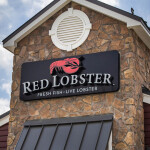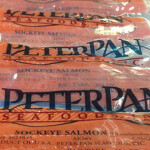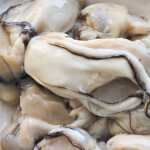Automated oyster shucking using HPP offering shellfish suppliers maximized yield, reduced labor costs
Sponsored

The USD 143 million (EUR 133 million) North American oyster industry has come up against a litany of food safety challenges heading into the 2023 holiday season, when celebratory shellfish consumption tends to peak.
The U.S. Food and Drug Administration (FDA) has issued a series of warnings this year involving different raw oyster products found to be contaminated with pathogens known to cause foodborne illness, including Vibrio parahaemolyticus.
“Oysters with high levels of Vibrio parahaemolyticus can cause illness if eaten raw, and potentially severe illness in people with compromised immune systems,” the FDA said in one of its latest notices issued in November. "Food containing Vibrio parahaemolyticus may look, smell, and taste normal.”
HPP promotes the inactivation of “viruses, bacteria, and parasites without affecting the natural freshness and taste of oyster meat” by applying moderate levels of pressure (around 250 MPa / 35,000 psi) without heat, Tonello explained. These psi levels are able to denature the adductor muscles responsible for keeping bivalve mollusks closed, effectively prompting the shells to open and release oyster meat with maximum yield, Tonello said.
“Shucking raw oysters and bivalve mollusks using HPP technology is an effective method to maximize shucking yield, reduce labor costs, and avoid operator injuries,” Hiperbaric USA Executive Director Roberto Peregrina added.
When using HPP, productivity and profit margins can receive a considerable boost, Hiperbaric noted, with some studies showing a 50 to 70 percent drop in shucking times compared to handheld/knife methods.
“Since you're using lower pressures than for most post-packaged products, you are able to double your throughputs and also the holding time,” Peregrina said. “Those are the two major parameters: the pressure and the holding time that you hold that pressure at. Since the pressure is significantly lower with raw oyster products than with most post-packaged products, you are able to double your throughput. Our smallest machine, the Hiperbaric 55, can shuck about 1,000 pounds per hour, while our largest machine, the Hiperbaric 525, is able to shuck around 11,000 pounds per hour.”
Additionally, oyster shelf-life can receive an extension of up to 21 days “without the need to use any additives or preservatives” when HPP is involved, Hiperbaric said, “offering a fresh, natural, and clean-label product.”
“Since no heat is involved, the raw sensory and nutritional profile of the fresh product is preserved. Also, HPP provides an infused salty taste. A unique value proposition for food service and retail: raw, uncooked meat that can be sold frozen or fresh,” Peregrina added. “This reduces labor costs and increases yield compared to traditional manual or heat-assisted shucking.”
The FDA backs the use of HPP for oysters, with the agency regarding the process as “reasonably certain to be effective in achieving the intended technical effect of the treatment while maintaining oyster safety and quality."
“In other words, HPP allows oysters to retain the fresh attributes consumers desire, with added assurance of safety,” Peregrina said. “For oyster processors seeking to improve productivity and enhance food safety, HPP is an innovative and effective technology solution worth exploring. With regulatory approval and demonstrated success, HPP can enable effortless shucking and elimination of dangerous bacteria, supporting the long-term growth and viability of the oyster industry.”
A variety of oyster presentation formats are supported by HPP, according to Hiperbaric, including in the shell, half-shell, and shucked meat alone with no shell. For products sold in-shell, rubber bands are wrapped around the shellfish to secure the meat from dropping, the company explained.
For example, French oyster processor CinqDegrésOuest uses HPP to open its premium oysters sourced from the renowned Cadoret farm in Brittany. Purified in basins, CinqDegrésOuest’s Cadoret oysters emerge from the HPP process incredibly clean in the half-shell, without any shell traces in the shucked meat, according to CinqDegrésOuest President Alexis Taugé.
“HPP allows us to leverage generations of oyster farming expertise while upholding the highest modern standards for quality and safety," Taugé said.
Because HPP doesn’t impact “the appearance, texture, or taste of oysters, processors like CinqDegrésOuest can use it to improve shelf-life and safety, while upholding the premium positioning of their raw, fresh products,” Peregrina said.
The only non-thermal technology that preserves seafood products without using heat, HPP is widely used in the seafood industry for shellfish shucking, per Hiperbaric. In addition to oysters, the technology is able to recover 100 percent of the edible meat from lobsters, mussels, crab, and many other shellfish species, the company said.
Hiperbaric’s suite of HPP equipment includes the Hiperbaric 55, the Hiperbaric 135, the Hiperbaric 300, the Hiperbaric 420, and the Hiperbaric 525. Founded in 1999, Hiperbaric is a processing partner for hundreds of companies worldwide across various industries, including juices and beverages, meat, fish and shellfish, fruits and vegetables, dairy, and prepared dishes. It has an office in Miami, Florida, U.S.A. to specifically service the North American market.
Find information on Hiperbaric’s processing innovations, seafood partners, and more by visiting its website.










